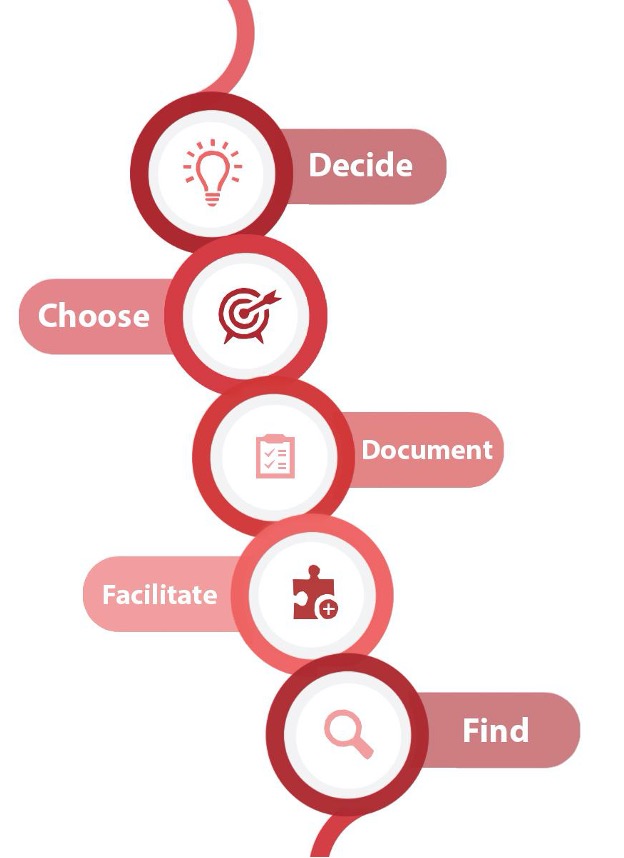You've decided to make the leap and share your research data. You might do this to improve the transparency of your study, allowing others to reproduce the work. Or you want to set up new collaborations or allow others to build further on your research, speeding up scientific discovery. You may also want to obtain credit or visibility for all the work that you put into collecting and curating the data. Or you may simply want to share your data because others require your research outputs to be made publicly available to receive funding or to be published.
How can you make research data accessible?
How can you make research data accessible?

Image courtesy of Esther Plomp.
By Esther Plomp, TU Delft.
This guide is part of the Research Software Camp: research accessibility web content series.
You've decided to make the leap and share your research data. You might do this to improve the transparency of your study, allowing others to reproduce the work. Or you want to set up new collaborations or allow others to build further on your research, speeding up scientific discovery. You may also want to obtain credit or visibility for all the work that you put into collecting and curating the data. Or you may simply want to share your data because others require your research outputs to be made publicly available to receive funding or to be published.
Below follow some steps that you can take in your quest to share your data. These steps can be discussed and recorded in a Data Management Plan, which should ideally be set up at the beginning of your project. It is a lot easier to know what to do when you know where you are going from the start!
1. Decide what you are comfortable with
There is no single right way of making your data available. You can share the data underlying the results and conclusions of your publication or you can decide to take it steps further and share all the data that has been generated in your project. Not all data can be made openly available (because of ethical and commercial concerns or data size). Once you have decided what data you will share there are several options to share the data: through data journals, in connection to a publication or publishing the data as a stand-alone research output in a data repository.
2. Choose a repository
To find out which platform or data repository, you can use to share your research data have a look at what repositories other researchers in your field are using. Most journals now require ‘data availability statements’ in which the authors provide information about whether the data is openly available and where it can be found. If this is not the case in your field you can look for repositories using Re3data.org and FAIRsharing or Nature’s list of recommended repositories. If there are no discipline specific repositories you can always use a more generalist repository such as Zenodo.org. Ideally your repository will assign a DOI, a Digital Object Identifier, to your dataset which will allow others to cite your data (see step 4). Sharing your data through a data repository will make your data FAIR: Findable, Accessible, Interoperable and Reusable (if you follow steps 2-4).
3. Document your data
To be able to interpret the dataset you should document your data well and provide any information needed for others to be able to reuse the data. Documentation can be done by setting up a data dictionary, codebook or a readme file that describes how the dataset was generated. This description should be more thorough than only describing the column and row variables, but also include methodological information. What would anyone that would want to use your data want to know about it, without having to reach out to you directly? You can also check if the data repository has any recommendations or guidelines for documentation. For example, 4TU.ResearchData offers guidelines for a readme file.
4. Facilitate reuse and citation of your data
Let others know how you would like your data to be cited and cite your own data in the publication (and also cite the data of others!). You can set up a data availability statement in the paper and choose a license that defines how others can reuse your data. In order to make your data reusable you should ensure that next to the proprietary format (or the format that you expect others will reuse your data) to also preserve the data in an open format that can be opened by most software (so rather than only sharing a proprietary .xlsx format also include an open .csv file).
5. Find your community or support
Your university library will often offer support for research data management and open science practices. If you are unsure about sharing your data, or if you want to take further steps but are not sure how, see what kind of support or training/workshops they offer!
Further inspiration:
Many thanks for the feedback from TU Delft colleagues: Alastair Dunning, Nicolas Dintzner and Jeff Love.
